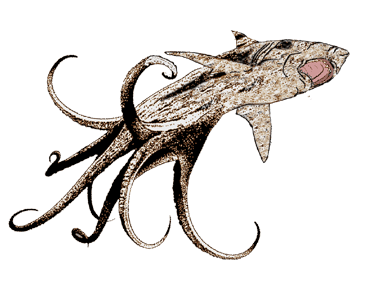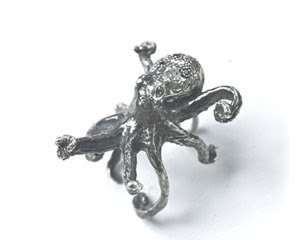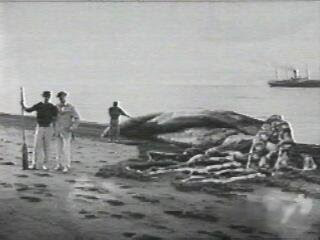Post by MoMo on Mar 10, 2012 23:25:27 GMT -6
Lusca

Grouping: Cryptid
Sub grouping: Sea Monster
First reported: 1896, possibly earlier
Country: Andros, Bahamas
Region: Blue Holes
Habitat: Water
The lusca is a name given to a sea monster reported from the Caribbean. It has been suggested by cryptozoologists that the lusca is a gigantic octopus, far larger than the known giant octopuses of the genus Enteroctopus.
Description


The lusca is said to grow over 75 ft (23 m) long, or even 200 ft (60 m) long, however there are no proven cases of other octopus species growing to half these lengths. To attack properly on the surface, the octopus would have to have one tentacle on the sea floor to balance itself; this would mean that such accounts, if real, would have to take place in relatively shallow water. Other descriptions also mention that it can change color, a characteristic commonly found in smaller octopuses. The supposed habitat is rugged underwater terrain, large undersea caves, the edge of the continental shelf, or other areas where large crustaceans are found, which is supposedly what they feed on. Although the general identification of the lusca is with the colossal octopus, it has also been described as a either a multi-headed monster, a dragon-like creature, or some as a kind of evil spirit.
Sightings
Many reports of the creature are from the blue holes, off Andros, an island in the Bahamas. The St. Augustine Monster (an example of a globster), which washed up in 1896 on the Florida coast, is considered one of the better candidates for a possible lusca specimen. These claims, however, are doubtful; recent evidence suggests the St. Augustine Monster, like many globsters, was simply a large mass of decomposing adipose tissue from a Sperm Whale. Scientists dismiss the lusca as at most a large example of the giant or Colossal squid.




Grouping: Cryptid
Sub grouping: Sea Monster
First reported: 1896, possibly earlier
Country: Andros, Bahamas
Region: Blue Holes
Habitat: Water
The lusca is a name given to a sea monster reported from the Caribbean. It has been suggested by cryptozoologists that the lusca is a gigantic octopus, far larger than the known giant octopuses of the genus Enteroctopus.
Description


The lusca is said to grow over 75 ft (23 m) long, or even 200 ft (60 m) long, however there are no proven cases of other octopus species growing to half these lengths. To attack properly on the surface, the octopus would have to have one tentacle on the sea floor to balance itself; this would mean that such accounts, if real, would have to take place in relatively shallow water. Other descriptions also mention that it can change color, a characteristic commonly found in smaller octopuses. The supposed habitat is rugged underwater terrain, large undersea caves, the edge of the continental shelf, or other areas where large crustaceans are found, which is supposedly what they feed on. Although the general identification of the lusca is with the colossal octopus, it has also been described as a either a multi-headed monster, a dragon-like creature, or some as a kind of evil spirit.
Sightings
Many reports of the creature are from the blue holes, off Andros, an island in the Bahamas. The St. Augustine Monster (an example of a globster), which washed up in 1896 on the Florida coast, is considered one of the better candidates for a possible lusca specimen. These claims, however, are doubtful; recent evidence suggests the St. Augustine Monster, like many globsters, was simply a large mass of decomposing adipose tissue from a Sperm Whale. Scientists dismiss the lusca as at most a large example of the giant or Colossal squid.









